Now that the coronavirus has forced the postponement of the 2020 Nuclear Nonproliferation Treaty (NPT) Review Conference, there is an opportunity to prepare for a more successful conference that could contribute significantly to strengthening the NPT regime, writes Robert Einhorn. This piece was originally published by the Bulletin of the Atomic Scientists.
Given the sharp differences among parties to the Nuclear Nonproliferation Treaty (NPT), especially on the pace of nuclear disarmament, it was widely assumed that the 2020 NPT Review Conference — originally scheduled to begin on April 27 in New York — would be highly contentious, would fail to achieve a consensus outcome, and might even result in erosion of support for the treaty. Now that the coronavirus has forced its postponement, there is an opportunity — if the time between now and the re-scheduled gathering of NPT parties is used effectively — to prepare for a more successful conference that could contribute significantly to strengthening the NPT regime.
The initial announcement of the postponement stated that, in light of the COVID-19 pandemic, the conference would be held at “a later date, as soon as circumstances permit, but no later than April 2021.” Subsequently, when no better dates could be found on the very crowded U.N. calendar than January 4 to 29, 2021, the conference president-designate decided to place a tentative hold on those dates, pending resolution of the pandemic, and NPT parties subsequently agreed to proceed on that basis.
The new date is noteworthy because, if it holds, the U.S. presidential inauguration will fall during the conference, opening the possibility that one administration would be in office at the beginning and its successor would be in office at the end. But NPT parties should not defer preparations while awaiting the outcome of the U.S. elections. Instead, they can and should use the additional preparation time to work toward a more productive and successful conference than would have otherwise been possible.
Pessimistic outlook for 2020 Review Conference. NPT Review Conferences have been held at five-year intervals since the treaty’s entry into force in 1970. At each review conference, parties have sought to produce a comprehensive final document, approved by consensus, that reviews the implementation of the treaty and sets forth recommendations for follow-on actions to strengthen it. While such a consensus outcome has not always been achieved, it has been viewed as the litmus test of a successful conference and an indication of a healthy NPT regime. With the 2020 Review Conference commemorating the 50th anniversary of the NPT’s entry into force, producing a successful outcome has taken on considerable symbolic importance.
Expectations for the 2020 conference were low from the get-go. The key fault line running through the NPT’s membership has been the belief by many non-nuclear weapon states, especially within the group of non-aligned states, that the NPT nuclear weapon states have not done enough to meet their obligation under the treaty to pursue nuclear disarmament. This has been a divisive issue at all previous review conferences.
But the difficulty of finding common ground on disarmament matters has increased for the 2020 conference, mainly because of the deteriorating international security environment. Recent years have witnessed a sharp decline in U.S.-Russian and U.S.-Chinese relations; the unraveling of the international arms control regime with the termination of the Intermediate-range Nuclear Forces treaty and uncertainty about the future of the New START treaty; the possibility of new, destabilizing nuclear arms competitions; and consequently little near-term prospect of further nuclear arms reductions.
However, disarmament is not the only issue that could stand in the way of a consensus conference outcome. Implementation of the 1995 resolution on establishing a Middle East zone free of all weapons of mass destruction — an issue that prevented consensus at the 2015 Review Conference — could again pose an obstacle. Addressing the Iran nuclear issue, with the future of the 2015 nuclear agreement very much in doubt, could also be very contentious. The Treaty on the Prohibition of Nuclear Weapons, with its non-nuclear weapon state signatories sharply divided from its opponents (consisting largely of the NPT nuclear powers and non-nuclear states protected under the U.S. nuclear umbrella), will also be hotly debated. And a range of more technical issues, such as whether the International Atomic Energy Agency (IAEA) Additional Protocol should be the universal safeguards standard for NPT members, could also be the focus of divergent conference positions.
Surveying some of the issues that could produce discord at the 2020 Review Conference, Tariq Rauf, a former senior IAEA official and close observer of NPT Review Conferences, wrote in March, before the postponement was announced, that “the die is cast for this year’s review conference to degenerate into a Hobbesian fray, perhaps even leading some countries to threaten rhetorically to withdraw from the treaty.”
Despite a widely held gloomy outlook, there have been some glimmers of hope that the 2020 Review Conference would not end in failure. Notwithstanding some strong disagreements among the parties on the implementation of the treaty, there is a deep reservoir of support for the NPT itself and a reluctance to place it in jeopardy, especially on its 50th anniversary. In addition, many advocates of more rapid progress on disarmament may recognize that the current international environment is not conducive to such progress and may scale back their demands and settle for more modest results in order to avoid putting strain on the NPT. Moreover, the Trump administration has been hopeful that its initiative on Creating the Environment for Nuclear Disarmament, which brings nuclear and non-nuclear weapon states together to consider how to promote an environment more favorable to disarmament, has been gaining traction internationally and could facilitate a less confrontational conference.
Still, even if a train wreck at the originally scheduled conference could have been avoided, the best that was expected was an outcome that minimized harm to the NPT, rather than a result that significantly advanced the treaty’s goals. Hopefully, the reprieve provided by the postponement has created an opportunity to work toward such a positive result at the re-scheduled conference.
Impact of the U.S. election. The November 2020 presidential election in the United States is a factor in NPT parties’ thinking about what may be achievable at the re-scheduled conference. This was especially the case after the initial announcement that the postponed conference would take place as soon as possible but no later than April 2021, which meant that it could be held either before or significantly after the American election.
A thinly veiled hope of many countries in the wake of that initial announcement was that it would take place after an election in which a Democrat (namely, Joe Biden) would win and adopt positions closer to their preferences than those of the Trump administration, especially on disarmament-related matters as well as on such regional proliferation issues as the Iran nuclear deal.
The Trump administration had a different scenario in mind. It hoped the postponed conference would take place before the election (perhaps in October 2020), when it would be guaranteed to be in office and to represent the United States at the conference. It would thus have the opportunity to set forth its own approach to NPT issues and put its own stamp on the NPT review process, regardless of the eventual winner of the November election.
The revised dates — January 4 to 29 — alter the situation. These dates are still only tentative and could conceivably change. But the January period, if it holds, raises a possibility unprecedented for NPT Review Conferences — that one U.S. administration would be in office at the beginning of the conference and its successor would be in office at the end.
Of course, this would not occur if President Trump is re-elected in November. In that case, NPT parties’ expectations would be shaped by the knowledge that the Trump administration would be in charge of U.S. policy throughout the conference and beyond. But if Biden is elected and takes office on the mandated inauguration day of January 20, the presidential transition would occur just before the final week of the conference, always the most decisive period in any review conference.
Given this theoretical scenario, a number of NPT parties, might entertain hopes that a Biden administration would come to the rescue in the concluding phase of the conference and deliver what they consider to be a positive outcome.
Don’t defer preparations. But it would be unwise for NPT parties to pin their hopes on a Biden victory in November and therefore put off engaging in serious substantive preparations until the elections results are in. For one thing, Trump has a reasonable chance of being re-elected. Current polls indicate that the presidential race is likely to be close.
Moreover, even if Biden wins the November election, it is unclear what his embryonic administration would be willing to do to alter the course of the conference in its concluding days. NPT parties would be wrong to assume that the clock could simply be turned back to the optimistic days of the 2010 conference and the early years of the Obama presidency. The international environment for disarmament has changed for the worse since then. A Biden administration would clearly be much more supportive of arms control than the current administration. But it is unlikely, especially in its earliest days, to champion some recommendations that strong supporters of disarmament would like it to support (such as seeking deeper nuclear reductions in the near term, giving high priority to ratification of the Comprehensive Nuclear Test Ban Treaty in the U.S. Senate, reducing alert levels for nuclear forces, or pledging not to use nuclear weapons first).
It may also be unrealistic to expect a Biden administration to adopt specific substantive positions on sensitive issues in the waning days of the conference. Although the president-elect’s transition team would have done a lot of thinking and planning about NPT-related issues leading up to and following the election, no administration political-level appointees (other than perhaps a few cabinet secretaries) will be confirmed by the Senate and in place in the days immediately following the inauguration, and the formal interagency reviews that help set the key policies of a new administration will not even have begun.
Moreover, from a political standpoint, the newly installed administration may be reluctant to adopt bold new positions that could subject it to criticism for supposedly showing weakness on national security in its opening days.
The Biden team undoubtedly would want to demonstrate to NPT parties in the concluding phase of the conference that it will be charting a different course than its predecessor. But it may only be ready to signal that different course in general terms (such as by expressing support for revitalizing the arms control process and making further progress toward a world without nuclear weapons). An exception would be New START, where a decision to extend the treaty would be needed before its February 5 expiration (if the Trump administration had not already acted to extend it).
It is possible to imagine coordination between the incoming and outgoing teams on how to handle the NPT Review Conference. There are many conference issues, including measures to strengthen nonproliferation controls or promote the peaceful uses of nuclear energy, on which the Trump and Biden teams could agree. The U.S. delegation (which by the concluding phase of the conference could conceivably include Trump appointees, Biden appointees not requiring Senate confirmation, and career officials) could be instructed to pursue those common positions. But in areas where the administrations disagree, including some disarmament-related matters, the American delegation might adopt the approach of urging other delegations not to press for conference findings or recommendations on those difficult issues, appealing to those delegations on the grounds that it is simply too early to expect the new administration to take a stand.
Another reason for NPT parties not to count heavily on the results of the November election is that the United States, whoever is president, bears only limited responsibility for a successful review conference. Russia (with its Intermediate-Range Nuclear Forces Treaty violation and resistance to further nuclear reductions), China (with its reluctance to accept limits on its growing nuclear arsenal or engage in serious strategic stability talks), North Korea (with its defiance of the international community), Iran (with its destabilizing regional posture), and certain non-nuclear weapon states (with their uncompromising approach to key review conference issues) all deserve their fair share of blame for the current state of affairs and should accept their share of responsibility for getting on a more promising path. All NPT parties need to do their part in promoting an outcome that strengthens the nonproliferation regime.
So, for a variety of reasons, it is not a good idea for NPT parties to hold off on preparations in the hope that a newly installed Democratic administration will be able and willing to support the kind of conference outcome they favor. Instead, the parties should use the roughly eight months reprieve provided by the postponement to prepare the way for a more productive conference than would have been possible if the 2020 Review Conference had proceeded on schedule. That means starting now to work closely with the Trump administration and other key governments to find common ground on key issues.
Obstacles to early substantive progress. There are two significant obstacles to using the available time effectively. First, it is hard to predict when countries will be sufficiently recovered from the COVID-19 pandemic to permit in-person diplomatic engagements that could facilitate conference preparations. Until it is safe for diplomats to congregate, preparatory work will need to be conducted virtually. And as long as the virus is the overriding preoccupation of national governments, limited bandwidth will remain for lower priorities.
Second, progress in finding common ground on difficult issues will depend on overcoming the traditional reluctance of most NPT parties to adjust their national positions and pursue compromise solutions before the conference gets underway. This is why Review Conference Preparatory Committees, which meet years in advance of review conferences, have had such a difficult time achieving their goal of reaching consensus recommendations to be sent to the review conferences for their consideration.
NPT parties will need to do their best to overcome these obstacles. While Zoom meetings have their drawbacks and are not a fully satisfactory substitute for in-person consultations, governments are getting accustomed to virtual diplomacy, and there is much that can be done remotely, bilaterally as well as multilaterally, until conditions permit a return to normal practices.
The tendency to put off painful compromises until the negotiating endgame may be more difficult to overcome. But this is an unusual year, with the pandemic creating extreme hardships for practically all countries and strains within the NPT membership raising questions about the future of the treaty. On the NPT’s 50th anniversary — and with the devastating global impact of the coronavirus driving home the importance of international cooperation to address common challenges — parties may be more motivated than at previous review conferences to reach early agreement on hard issues for the sake of promoting a successful outcome.
The role of the Review Conference bureau. Supported by the United Nations Office of Disarmament Affairs and the IAEA, the Review Conference “bureau” — consisting of conference president-designate Gustavo Zlauvinen of Argentina and the Malaysian, Polish, and Dutch designated chairs of the conference’s three main committees — can play a critical role in giving impetus to preparations at a time when the international community’s attention is understandably directed elsewhere.
Zlauvinen, his country’s highly skillful and experienced former deputy foreign minister, and his bureau colleagues know that, as officers of the conference, they are expected to remain neutral on key issues and not try to steer the conference in particular substantive directions. But especially in this difficult period, they can help keep governments focused, bring them up to speed on the issues they will need to address and the choices they will have to make, facilitate their engagement with one another, and urge them to work together to make early progress finding mutually agreeable solutions on critical issues and crafting formulations for a review conference outcome document.
Before the coronavirus hit and closed down in-person meetings, various governments and organizations organized a number of workshops, often on a regional basis, to discuss review conference issues in general or to focus on particular “pillars” of the NPT (disarmament, nonproliferation, peaceful uses of nuclear energy). Similar gatherings of NPT parties should now be pursued on an intensified basis, initially virtually but eventually in person as conditions permit.
Such events could involve different groups of participants, focus on different subjects, and have different purposes. Regarding participation, meetings could be held on a regional basis or bring together key players on particular issues from various regions. Experts from non-governmental organizations might also be invited when appropriate. Subjects could vary from a wide-ranging discussion of review conference issues, to a narrower discussion of individual pillars, to an even more focused discussion of specific issues (such as nuclear risk reduction measures, the future of nuclear arms control, the IAEA Peaceful Uses Initiative, the IAEA Additional Protocol, or the 1995 Middle East zone resolution). The purpose of the meetings might be educational or consciousness-raising, or they might be intended to acquaint participants with arguments surrounding issues on which differences exist.
Setting in motion an ambitious program of meetings will be challenging in present circumstances. Ambassador Zlauvinen and his team will need to be proactive in formulating and scheduling such a program and in gaining sufficient buy-in for it among the most influential NPT parties. Together with the separate bilateral and small-group consultations that Zlauvinen and the bureau will be pursuing to move the process forward, these multilateral gatherings could play an important role in building momentum toward a productive conference.
Seeking progress on key issues. While the bureau can play a valuable convening, facilitating, and catalyzing role in the period before the conference, most of the heavy lifting in moving toward substantive agreement on the most salient issues will be the responsibility of NPT governments. On many issues, consensus will be readily achievable. But outcomes on a smaller number of more controversial issues will determine whether the conference succeeds in supporting and strengthening the NPT and the broader nonproliferation regime. Key NPT parties should use the time available to resolve or at least make substantial headway on those issues.
New START. Agreement by the United States and Russia to extend New START for five years would give a huge boost to review conference prospects. The Trump administration has so far resisted extension, arguing that simply extending the bilateral treaty would not address some significant Russian capabilities (including non-strategic nuclear weapons and a few novel strategic systems) or cover China’s growing nuclear programs. It has instead proposed including China in a new trilateral arms control agreement. But citing the huge disparity between its own nuclear capabilities and those of the United States and Russia, Beijing has firmly rejected such a trilateral agreement.
Washington and Moscow should agree to a five-year extension of New START and link that extension to the commencement of bilateral strategic talks that would consider how New START or a follow-on agreement could address systems not yet covered that are of concern to either side or both of them (including non-strategic nuclear weapons, long-range conventional strike missiles, and hypersonic systems). Those bilateral talks would also consider how additional nuclear-armed states, especially China, could be brought into the international arms control framework.
Creating an environment for nuclear disarmament. With or without New START extension, it would be useful in advance of the conference to make progress on the U.S. initiative on Creating an Environment for Nuclear Disarmament. While a significant number of NPT parties initially approached the initiative with skepticism about the Trump administration’s motives — and some still do — the initiative has gained buy-in as a forum that can bring nuclear and non-nuclear weapon states together for a detailed and systematic consideration of how to improve prospects for nuclear disarmament. Constructive discussions in its three subgroups, whether carried out virtually or in person, could improve the atmosphere for addressing disarmament matters at the Review Conference.
Nuclear risk reduction. Many NPT parties recognize that, in today’s increasingly troubled strategic environment — with the outlook for further nuclear reductions bleak, at least in the near term — a very high priority, perhaps top priority, should be given to reducing the risk of nuclear war, which many observers believe has significantly increased in recent years. Confidence-building and transparency measures can minimize the likelihood of misperceptions, accidents, and miscalculations that could lead to conventional armed conflict and escalate to the use of nuclear weapons. While such measures are most appropriately pursued in particular regional contexts (for example the NATO-Russia border, the Korean Peninsula, the western Pacific, or South Asia), the conference can give these measures its strong support and call on governmental or non-governmental experts to prepare a study of past and current nuclear risk reduction arrangements that could help promote and inform future regional and global initiatives.
U.S.-China strategic stability dialogue. A major gap in international arms control and nuclear risk reduction efforts is the absence of a serious strategic dialogue between the United States and China, two protagonists whose growing strategic competition is a serious potential source of instability in East Asia. Washington and Beijing should pursue a high-level bilateral strategic dialogue aimed at gaining a better understanding of each other’s strategic intentions and capabilities, avoiding worst-case planning and a destabilizing arms competition, and exploring risk reduction measures that could reduce the likelihood of dangerous miscalculations and armed conflict. The United States has long sought such a dialogue, but China has resisted it. In advance of the Review Conference, the two countries should agree to begin such talks, a development that would certainly be welcomed as an important contribution to reducing nuclear dangers.
Role of the P5. The five NPT nuclear weapon states, dubbed the P5 because they are the five countries with permanent seats on the U.N. Security Council, have usually worked together cooperatively at previous review conferences, both to promote successful conference outcomes and to defend their records on nuclear disarmament against criticism from non-nuclear weapon states. Although the souring of relations within the group has made P5 solidarity more difficult to achieve, the five need to work together cooperatively in the “P5 Process” (a consultative mechanism begun in 2009) to demonstrate they are taking seriously their collective commitment to reducing nuclear threats and pursuing disarmament. They will report to the Review Conference on progress they have made in several areas, including a dialogue on nuclear doctrines and a glossary of key nuclear terms.
In the area of doctrine, the group considered, but could not reach consensus on, a collective endorsement of the Reagan-Gorbachev statement that a nuclear war could not be won and should never be fought. Instead, they have been working on a new statement that would address the role of nuclear weapons. The P5 should use the time between now and the conference to produce a statement acknowledging and affirming their responsibility to work toward a world in which nuclear weapons play a smaller and smaller role and are eventually eliminated. Although each of the five holds its own national position on the role and use of nuclear weapons (China‘s no-first-use policy is the most restrictive), such a P5 statement would seek to outline positions that they share, drawing perhaps on the following elements:
- The use of nuclear weapons should be considered only in the most extreme circumstances when vital national interests are in jeopardy;
- The fundamental role of nuclear weapons is to deter the use of nuclear weapons;
- Even the lowest-yield nuclear weapons are qualitatively different than conventional weapons and must be treated accordingly;
- Even a limited use of nuclear weapons carries a grave risk of escalation to large-scale nuclear war;
- The longstanding norm against the use of nuclear weapons should remain strong and should never be violated.
Strengthening barriers to proliferation. At past review conferences, proposals for additional nonproliferation measures have encountered resistance, especially by certain non-nuclear weapon states, on the grounds that such measures are not justified in the absence of further steps by NPT nuclear weapon states, mainly the United States and Russia, to meet their obligation to pursue nuclear disarmament. While deep disappointment with the current impasse on disarmament is understandable, it is unwise to hold critical nonproliferation steps hostage to further progress in disarmament. Not only does such a strategy consistently fail to promote advances in disarmament (which depend on international and domestic factors unrelated to such pressure tactics); it risks easing the path to the acquisition of nuclear weapons by additional states — a development that would adversely affect the interests of both non-nuclear weapon states and nuclear weapon states.
NPT parties should take advantage of the additional time provided by the postponement to make a major push for two critical nonproliferation measures: making the IAEA Additional Protocol the universal standard for NPT monitoring arrangements and preventing abuse of the NPT’s withdrawal provision.
Despite repeated statements by the IAEA that the Additional Protocol is a critical tool for verifying compliance with the NPT by non-nuclear weapon states, a number of NPT parties with nuclear facilities or significant nuclear plans, including Algeria, Argentina, Brazil, Egypt, Saudi Arabia, and Syria, have so far been unwilling to adhere to it. (Iran provisionally abides by it, but its commitment to adhere formally depends on whether it will continue to be bound by the 2015 nuclear agreement, the Joint Comprehensive Plan of Action.) Technically based arguments against Additional Protocol adherence, particularly that it would place undue burdens on civil nuclear energy programs (or in the case of Brazil, on its naval propulsion program), have been convincingly refuted. But political arguments persist, especially that non-nuclear states should not be required to take on additional commitments until the nuclear weapons states fulfill their disarmament commitments and also, by some Arab governments, that Israel’s neighbors should not be asked to accept additional measures while Israel remains outside the NPT. Overcoming these political objections will require diplomatic efforts at the highest levels of government.
NPT parties should also find a remedy for one of the treaty’s major shortcomings: if a party exercises its right to withdraw, IAEA safeguards on its nuclear facilities and materials automatically lapse, leaving it legally entitled to use the facilities and materials it acquired under the treaty in a nuclear weapons program. North Korea didn’t even wait for withdrawal before pursuing nuclear weapons; it violated the treaty years before formally withdrawing from it.
Although there is broad support among NPT parties for certain principles (such as that states cannot escape responsibility for NPT violations by withdrawing), specific proposals advanced at previous review conferences have not been adopted. Among the ideas proposed for addressing the withdrawal problem was a requirement for Security Council consideration of a state’s declared reasons for withdrawal; a requirement for a withdrawing state to accept intrusive IAEA inspections to determine whether it is already in non-compliance; and a requirement for states to accept “fallback safeguards” on critical facilities that would kick in if NPT safeguards lapsed due to withdrawal. Several states opposed such ideas, arguing that they would abridge the sovereign right of non-nuclear states to leave the treaty. With some parties now hinting at withdrawal and possibly considering a run for nuclear weapons, the need for concrete action on the withdrawal question is greater than ever.
Preparations for the Review Conference in coming months should include workshops on both Additional Protocol adherence and NPT withdrawal. Such workshops could involve governments that have taken an active interest in those issues.
Peaceful uses of nuclear energy. Peaceful uses has traditionally been the least contentious of the NPT’s three pillars, and that will again be the case at the upcoming Review Conference. In preparation for the conference, regional seminars devoted primarily to peaceful uses were held in Nigeria and South Africa. Additional seminars were planned for Latin America and Southeast Asia, but did not take place. The United States and other parties hope that the regional seminars and further consultations in coming months can provide the basis for an impressive package of new commitments on peaceful uses.
A significant focus of these efforts will be to augment the IAEA Peaceful Uses Initiative, which was launched in 2010 as a vehicle for raising extra-budgetary contributions to complement the IAEA’s Technical Cooperation Fund. It has raised over $100 million to fund a wide range of nuclear activities, especially in the developing world, in such areas as water and the environment, food and agriculture, human and animal health, and nuclear safety and nuclear power.
Addressing the ban treaty and the Middle East zone. Two divisive issues with the potential to block a conference consensus are the Treaty on the Prohibition of Nuclear Weapons (often referred to as the “ban treaty”) and the proposal for a Middle East zone free of all weapons of mass destruction.
Both issues are now being handled outside the NPT review process, and this may decrease the likelihood of their having a disruptive effect on the conference. Following a 2016 U.N. General Assembly resolution, a U.N. conference open to all member states completed negotiation of the ban treaty in 2017. Efforts by proponents are currently focused on gaining ratification by 50 states, the requirement for bringing it into force.
Similarly, in accordance with a 2018 U.N. General Assembly resolution (rather than a Review Conference decision, which would have required a consensus), an international conference on the zone proposal was held in November 2019 under U.N. auspices (not the auspices of the three NPT depositary governments) and will continue to be held annually, despite the strong objections of the United States, Israel, and others.
The two issues remain extremely contentious. Ban treaty proponents would presumably like to see a favorable reference to the treaty, including the judgment that it reinforces the NPT, a point that is strongly disputed by opponents. Opponents might want the conference either to be critical of the ban treaty or simply to remain silent on it.
On the Middle East issue, Arab governments, with Egypt likely taking the lead and with the support of Iran, may seek review conference endorsement of the U.N. General Assembly-mandated conferences, while the United States will continue to oppose a process that gives Israel little incentive to participate.
Parties should seek to resolve both of these issues by pursuing brief factual or non-controversial references to them in the outcome document. On the ban treaty, the conference could simply note that the treaty has been concluded and indicate how many states have already ratified it. On the zone, it could reaffirm the 1995 Review Conference resolution calling for the zone (which should not be controversial) and take note of the international conferences that were held on the issue in 2019 and 2020. Getting these potential obstacles out of the way before the conference begins could create a more favorable climate for tackling other difficult issues when the conference gets underway.
Approach to North Korea and Iran. The two “country issues” that most affect the future of the global nonproliferation regime — North Korea and Iran — need to be addressed, even though any real substantive work on the issues will take place separately. The outlook on both has become increasingly unpromising and could deteriorate further by the time of the conference.
On North Korea, summit diplomacy has reached a dead end. Kim Jong Un says he is no longer interested in negotiations with the United States and is no longer bound by his moratorium on testing nuclear weapons and long-range missiles. He has accelerated testing of short-range missiles and rockets and continued production of fissile material for nuclear weapons. But so far, he has avoided major provocations, such as nuclear or ICBM tests, probably to avoid alienating China and Russia or triggering a strong U.S. response. There is very little prospect of resuming negotiations before either the U.S. presidential elections or the Review Conference (if it is held in January).
The Iran situation is equally bleak. In response to the Trump administration’s withdrawal from the nuclear agreement and its adoption of a maximum pressure campaign, Iran has begun to rebuild its enrichment program in violation of the deal’s nuclear restrictions and has engaged in military provocations, either directly or through its proxies, against the United States and its regional partners. It has remained bound by the deal’s extensive monitoring provisions but has not cooperated with an IAEA investigation of possible violations of its safeguards obligations. The risk of armed conflict in the region has substantially increased. The agreement is hanging by a thread and could be gone altogether by the time of the conference.
Even without the COVID-19 crisis, constructive diplomacy on North Korea or Iran in 2020 would have been exceedingly unlikely. The pandemic has made it virtually impossible.
Given evolving developments on North Korea and Iran, it will difficult to reach conclusions in advance on how the issues will be addressed in a review conference outcome document. That will probably have to await the conference itself and will depend on the situations prevailing at that time.
In light of serious differences among NPT parties on both issues, common ground probably will only be attainable on brief, general recommendations. For example, on the North Korea issue (where consensus may be somewhat easier to reach because North Korea, as a non-party, will not attend the conference), the Review Conference might call for the resumption of negotiations, urge all countries to practice restraint and avoid provocations, and support the goal of the complete denuclearization of the Korean Peninsula (a goal shared by all NPT parties despite widespread doubts that it can be achieved).
Iran will be trickier because its representatives will be present and able to block a consensus, because of the sharp divide between the Trump administration and most other parties on the value of the 2015 nuclear deal, and because, if a U.S. presidential transition occurs during the conference, the incoming and outgoing administrations may clash on how to address the issue. Still, as with the North Korea case, a general recommendation may be possible — for example, simply calling on all interested parties to engage in negotiations on the nuclear issue and other issues of concern and, in the meantime, to exercise restraint and reduce tensions in the region.
Considering different kinds of outcomes. The postponement of the 2020 Review Conference provides an opportunity to consider various departures from traditional conference practices that could help promote its success.
Gift baskets. The outcome sought by all previous review conferences has been a comprehensive final document, approved by consensus, that reviewed the past operation of the NPT and set forth recommendations for advancing its goals in the future. But even when the parties were able to achieve such a consensus final document, their recommendations did not necessarily lead to concrete actions. Putting those recommendations into practice depended on follow-on decisions and actions by national governments and specialized bodies like the U.N. Security Council, the IAEA Board of Governors, and the Conference on Disarmament. Sometimes conference recommendations eventually led to concrete results, but sometimes they did not.
One way for the upcoming conference to demonstrate tangible results right away is to borrow an innovative feature from the 2010–2016 Nuclear Security Summit process. Delegations were encouraged to come to the summit meetings with “gift baskets”: voluntary commitments by individual countries or groups of countries to take specific steps to strengthen their own nuclear security systems and demonstrate their support for the international nuclear security regime.
NPT parties should be encouraged to bring similar gift baskets to the Review Conference. These voluntary undertakings would supplement, not replace, the effort to produce a comprehensive final document containing recommendations for future action. Because of the postponement, there is now enough time for national governments to do the internal reviews needed to decide what kind of commitments, if any, they are prepared to make.
Gift baskets could take many forms: a U.S.-Russian joint statement on extending New START; a statement by a nuclear weapons state that it is accelerating its dismantlement of retired nuclear weapons; a pledge to adhere to the Additional Protocol; an assurance by a group of nuclear weapons states (perhaps the P5) that they will continue their unilateral moratoria on nuclear testing for at least five more years; a monetary or in-kind contribution to the IAEA Peaceful Uses Initiative; a commitment to accept fallback safeguards on a country’s enrichment or reprocessing facilities; or a decision to join various nuclear safety or security conventions. Taken together, the gift baskets could make an impressive, concrete contribution to the nonproliferation regime and bolster the success of the Review Conference.
Plan B. Another departure from past review conferences would be to relax the requirement that all of the findings and recommendations in the final document be approved by consensus. Because of this all-or-nothing approach, several previous review conferences did not produce a final document and were seen as “failed” conferences. Many constructive ideas offered at these supposedly failed conferences had gained approval in the main committees, but could not be recorded in a final document because disagreements on a small number of issues blocked their adoption.
NPT parties should seek a consensus final document, just as at previous review conferences. But in the event that such an outcome is not achievable, the parties should be prepared to fall back to Plan B: a positive conference outcome that includes both consensus and non-consensus elements in a final document.
There are any number of possible Plan B outcomes, in terms of format and substance that could demonstrate a successful Review Conference. Conference leaders — the conference president and his bureau and key delegations — should not get locked into a single approach. Instead, they should be flexible and creative in putting together a package of elements, not all of them supported by consensus, that could be incorporated into a final document and capable of gaining the support of the parties.
Such a document could begin with a brief, high-level political declaration reaffirming strong support for the NPT and pledging to fulfill its obligations and ensure that its goals are fully realized. The document would give prominence to conference findings and recommendations that could achieve a consensus, but it would also acknowledge areas of disagreement as well as positions and recommendations that fall short of gaining consensus. (For a fuller discussion of Plan B, see “The 2020 NPT Review Conference: Prepare for Plan B.”)
Making good use of the reprieve. Many NPT governments and non-governmental observers believe that if the 2020 Review Conference had been held on schedule at the end of April 2020, a harmonious outcome would have been unlikely and that a contentious result could have eroded confidence in the future of the NPT. The postponement of the conference due to the COVID-19 pandemic provides a reprieve that can permit additional preparations.
Of course, additional time to prepare does not guarantee a more positive outcome. The Review Conference is likely to be difficult no matter when it is held. The polarization among NPT parties that has hampered the NPT regime for decades has gotten worse in recent years, exacerbated by the deteriorating international security environment, the increasingly adversarial bilateral relations between key major powers, and the resulting sharp decline in prospects for disarmament.
But the reprieve at least provides the opportunity to try to do better than what appeared possible before the postponement. Unfortunately, it is an opportunity significantly inhibited by the practical constraints on diplomatic engagement imposed by the coronavirus. It will require considerable ingenuity and energy on the part of the conference president and his bureau, supported by U.N. Office of Disarmament Affairs and the IAEA, to ensure that NPT governments stay actively focused on conference preparations during the challenging months ahead, to help structure preparatory work effectively, and not least to assist the parties in finding practical and innovative ways to interact with one another at a time when traditional in-person engagement is not possible. And most important, key NPT parties, working with the bureau and each other, will need to take advantage of the additional time to try, as early as possible, to resolve key issues that will determine whether a positive conference outcome can be achieved.
In the end, the most important determinant of success will be a recognition by parties to the NPT that, despite their differences, they have a strong common interest in preserving and strengthening a treaty that for 50 years has promoted international peace and security and that provides the indispensable international framework for pursuing disarmament, nonproliferation, and the peaceful uses of nuclear energy long into the future.
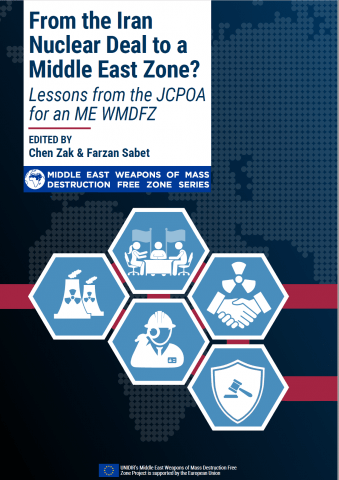
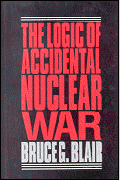

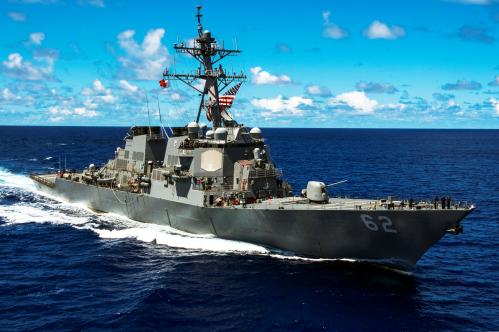
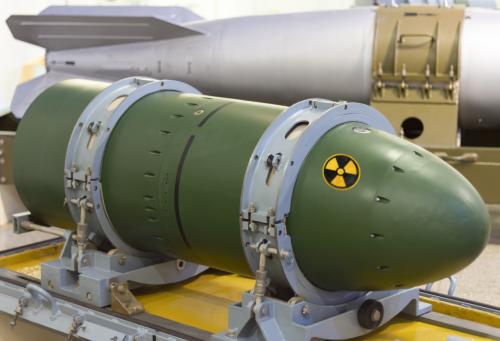
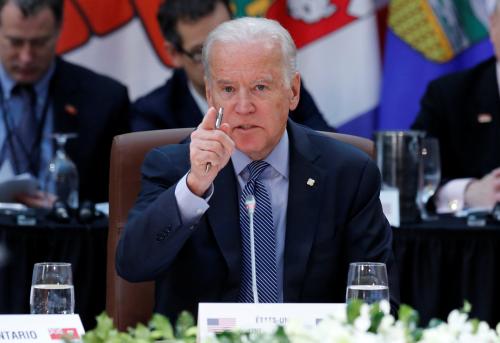

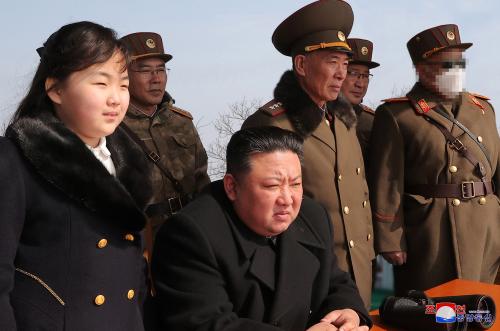
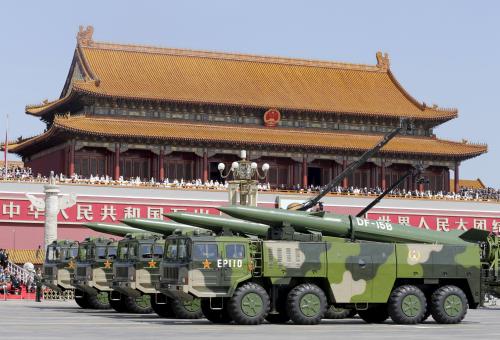
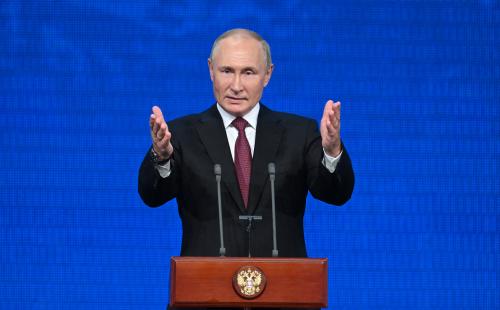
Commentary
COVID-19 has given the 2020 NPT Review Conference a reprieve. Let’s take advantage of it.
May 13, 2020